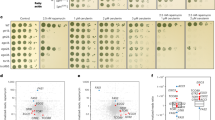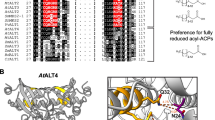Abstract
Cellular fatty acids typically derive from uptake from the extracellular milieu and, to a lesser extent, de novo synthesis. Extracellular fatty acids must traverse the plasma membrane, after which they are activated to their CoA thioesters for subsequent metabolism. Both uptake and metabolism are rapid processes, and there has been considerable debate as to whether transport of fatty acids across the lipid bilayer of the plasma membrane proceeds by diffusion or requires transport proteins. One group of proteins proposed to translocate fatty acids is the six-member Fatty Acid Transport Protein (FATP) family. These proteins were designated as such because when overexpressed, host cells exhibited higher rates of accretion of radioactive or fluorescent fatty acids. However, one member of this family, FATP2, is identical to an enzyme with very long-chain acyl-CoA synthetase (ACSVL) activity. This enzyme (ACSVL1 or FATP2), was isolated using classical protein purification techniques. In fact, the six-member ACSVL protein family is identical to the six-member FATP family. We and others have established that all six proteins have acyl-CoA synthetase activity. It remains to be established whether they participate in the physical translocation process, or facilitate transport by trapping, as CoA derivatives, fatty acids that enter cells by diffusion. To characterize the biological functions of the ACSVLs, we are investigating the properties of the overexpressed proteins and the endogenous proteins. We observed that for many ACSVLs, the subcellular location of the overexpressed protein differs from that of the endogenous protein. Using RNA interference (siRNA), we knocked down expression of FATP4 (proposed name: ACSVL5) in Neuro2a cells. Activation of both long-chain (C16:0) and very long-chain fatty acids (C24:0) was decreased when FATP4 was depleted. Despite decreased enzyme activity, initial rates of uptake of [14C]C16:0 were not affected when FATP4 was depleted. In contrast, COS-1 cells overexpressing FATP4 showed enhanced [14C]C16:0 uptake. Neither endogenous (Neuro2a) nor overexpressed (COS-1) FATP4 was localized to plasma membrane under routine cell culture conditions, but rather were found in intracellular membrane compartments. We conclude that, in the cell lines studied, endogenous FATP4 does not function to translocate FA across the plasma membrane.






Similar content being viewed by others
References
Abumrad, N. A., Sfeir, Z., Connelly, M. A., & Coburn, C. (2000). Lipid transporters: Membrane transport systems for cholesterol and fatty acids. Current Opinion in Clinical Nutrition and Metabolic Care, 3, 255–262.
Coe, N. R., Smith, A. J., Frohnert, B. I., Watkins, P. A., & Bernlohr, D. A. (1999). The fatty acid transport protein (FATP1) is a very long chain acyl-CoA synthetase. Journal of biological chemistry, 274, 36300–36304.
DiRusso, C. C., Li, H., Darwis, D., Watkins, P. A., Berger, J., & Black, P. N. (2005). Comparative biochemical studies of the murine fatty acid transport proteins (FATP) expressed in yeast. Journal of biological chemistry, 280, 16829–16837.
Gimeno, R. E., Ortegon, A. M., Patel, S., Punreddy, S., Ge, P., Sun, Y., et al. (2003). Characterization of a heart-specific fatty acid transport protein. Journal of Biological Chemistry, 278, 16039–16044.
Hall, A. M., Smith, A. J., & Bernlohr, D. A. (2003). Characterization of the Acyl CoA synthetase activity of purified murine fatty acid transport protein 1. Journal of Biological Chemistry, 278, 43008–43013.
Hall, A. M., Wiczer, B. M., Herrmann, T., Stremmel, W., & Bernlohr, D. A. (2005). Enzymatic properties of purified murine fatty acid transport protein 4 and analysis of Acyl-CoA synthetase activities in tissues from FATP4 null mice. Journal of Biological Chemistry, 280, 11948–11954.
Hansen, P. A., Gulve, E. A., & Holloszy, J. O. (1994) Suitability of 2-deoxyglucose for in vitro measurement of glucose transport activity in skeletal muscle. Journal of Applied Physiology, 76, 979–985.
Herrmann, T., Buchkremer, F., Gosch, I., Hall, A. M., Bernlohr, D. A., & Stremmel, W. (2001). Mouse fatty acid transport protein 4 (FATP4): Characterization of the gene and functional assessment as a very long chain acyl-CoA synthetase. Gene, 270, 31–40.
Hirsch, D., Stahl, A., & Lodish, H. F. (1998). A family of fatty acid transporters conserved from mycobacterium to man. Proceedings of the National Academy of Sciences of the United States of America, 95, 8625–8629.
Kamp, F., Guo, W., Souto, R., Pilch, P. F., Corkey, B. E., & Hamilton, J. A. (2003). Rapid flip-flop of oleic acid across the plasma membrane of adipocytes. Journal of Biological Chemistry, 278, 7988–7995.
Kamp, F., Zakim, D., Zhang, F., Noy, N., & Hamilton, J. A. (1995). Fatty acid flip-flop in phospholipid bilayers is extremely fast. Biochemistry, 34, 11928–11937.
Luiken, J. J., Turcotte, L. P., & Bonen, A. (1999). Protein-mediated palmitate uptake and expression of fatty acid transport proteins in heart giant vesicles. Journal of Lipid Research, 40, 1007–1016.
Mashek, D. G., Bornfeldt, K. E., Coleman, R. A., Berger, J., Bernlohr, D. A., Black, P., et al. (2004). Revised nomenclature for the long chain mammalian acyl-CoA synthetase gene family. Journal of Lipid Research, 45, 1958–1961.
Muller, G., Jordan, H., Petry, S., Wetekam, E. M., & Schindler, P. (1997). Analysis of lipid metabolism in adipocytes using a fluorescent fatty acid derivative. I. Insulin stimulation of lipogenesis. Biochimica et Biophysica Acta, 1347, 23–39.
Pei, Z., Fraisl, P., Berger, J., Jia, Z., Forss-Petter, S., & Watkins, P. A. (2004). Mouse very long-chain Acyl-CoA synthetase 3/fatty acid transport protein 3 catalyzes fatty acid activation but not fatty acid transport in MA-10 cells. Journal of Biological Chemistry, 279, 54454–54462.
Pei, Z., Oey, N. A., Zuidervaart, M. M., Jia, Z., Li, Y., Steinberg, S. J., et al. (2003) The acyl-CoA synthetase “bubblegum” (lipidosin): Further characterization and role in neuronal fatty acid beta-oxidation. Journal of Biological Chemistry, 278, 47070–47078.
Schaffer, J. E., & Lodish, H. F. (1994). Expression cloning and characterization of a novel adipocyte long chain fatty acid transport protein. Cell, 79, 427–436.
Stahl, A., Gimeno, R. E., Tartaglia, L. A., & Lodish, H. F. (2001). Fatty acid transport proteins: A current view of a growing family. Trends in Endocrinology and Metabolism, 12, 266–273.
Stahl, A., Hirsch, D. J., Gimeno, R. E., Punreddy, S., Ge, P., Watson, N., et al. (1999). Identification of the major intestinal fatty acid transport protein. Molecular Cell, 4, 299–308.
Steinberg, S. J., Mihalik, S. J., Kim, D. G., Cuebas, D. A., & Watkins, P. A. (2000a). The human liver-specific homolog of very long-chain acyl-CoA synthetase is cholate: CoA ligase. Journal of Biological Chemistry, 275, 15605–15608.
Steinberg, S. J., Morgenthaler, J., Heinzer, A. K., Smith, K. D., & Watkins, P. A. (2000b). Very long-chain acyl-CoA synthetases. Human “bubblegum” represents a new family of proteins capable of activating very long-chain fatty acids. Journal of Biological Chemistry, 275, 35162–35169.
Steinberg, S. J., Wang, S. J., Kim, D. G., Mihalik, S. J., & Watkins, P. A. (1999a). Human very-long-chain acyl-CoA synthetase: Cloning, topography, and relevance to branched-chain fatty acid metabolism. Biochemical and Biophysical Research Communications, 257, 615–621.
Steinberg, S. J., Wang, S. J., McGuinness, M. C., & Watkins, P. A. (1999b). Human liver-specific very-long-chain acyl-coenzyme A synthetase: cDNA cloning and characterization of a second enzymatically active protein. Molecular Genetics and Metabolism, 68, 32–42.
Uchida, Y., Kondo, N., Orii, T., & Hashimoto, T. (1996). Purification and properties of rat liver peroxisomal very-long-chain acyl-CoA synthetase. Journal of Biochemistry (Tokyo), 119, 565–571.
Uchiyama, A., Aoyama, T., Kamijo, K., Uchida, Y., Kondo, M., Orii, T., et al. (1996). Molecular cloning of cDNA encoding rat very long-chain acyl-CoA synthetase. Journal of Biological Chemistry, 271, 30360–30365.
Watkins, P. A. (1997). Fatty acid activation. Progress in Lipid Research, 36, 55–83.
Watkins, P. A., Ferrell, E. V., Jr., Pedersen, J. I., & Hoefler, G. (1991). Peroxisomal fatty acid beta-oxidation in HepG2 cells. Archives of Biochemistry and Biophysics, 289, 329–336.
Watkins, P. A., Gould, S. J., Smith, M. A., Braiterman, L. T., Wei, H.-M., Kok, F., et al. (1995). Altered expression of ALDP in X-linked adrenoleukodystrophy. American Journal of Human Genetics, 57, 292–301.
Watkins, P. A., Pevsner, J., & Steinberg, S. J. (1999). Human very long-chain acyl-CoA synthetase and two human homologs: Initial characterization and relationship to fatty acid transport protein. Prostaglandins, Leukotrienes and Essential Fatty Acids, 60, 323–328.
Zimmerman, A. W., & Veerkamp, J. H. (2002). New insights into the structure and function of fatty acid-binding proteins. Cellular and Molecular Life Sciences, 59, 1096–1116.
Acknowledgments
The authors thank Dr. Catherine Thompson for providing human brain cDNA. This work was supported by NIH grants NS37355, HD10981, and HD24061.
Author information
Authors and Affiliations
Corresponding author
Rights and permissions
About this article
Cite this article
Jia, Z., Pei, Z., Maiguel, D. et al. The Fatty Acid Transport Protein (FATP) Family: Very Long Chain Acyl-CoA Synthetases or Solute Carriers?. J Mol Neurosci 33, 25–31 (2007). https://doi.org/10.1007/s12031-007-0038-z
Published:
Issue Date:
DOI: https://doi.org/10.1007/s12031-007-0038-z




